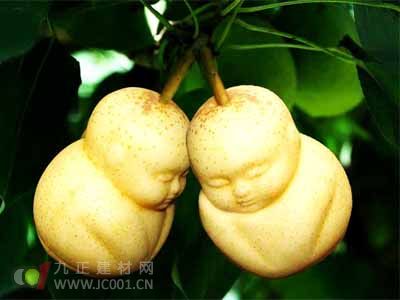Ginseng Fruit Cultivation Techniques:
When growing ginseng fruit, it's essential to choose a well-drained, sunny area with loose and nutrient-rich soil. The ideal soil pH should be neutral. Before planting, apply a base fertilizer of 4,000–5,000 kg of farmyard manure along with 50–70 kg of NPK compound fertilizer. Plant the seedlings at a spacing of 40–70 cm apart and dig holes about 20–30 cm deep. The rows should be 70 cm wide with 10 cm between them, and the soil level should be 10 cm above the ground.
Select healthy seedlings that are approximately 15 cm tall, with multiple branches, thick stems, and no signs of disease or pests. Plant them in a grid of 50 cm × 50 cm, typically done in the evening. A typical planting density is around 2,000–3,000 plants per acre. After planting, water the roots thoroughly to help establish the plants.
Fertilizer Management: In addition to the base fertilizer, two top-dressing applications are recommended. The first application occurs when the seedlings reach about 30 cm in height, and the second is just before flowering. Apply 3 kg of NPK fertilizer per acre, keeping the solution 10 cm away from the root zone. During the flowering period, adding small amounts of trace elements like boron fertilizer or Baofengsu No. 2 can enhance fruit development.
Regular fertilization is important, especially during the growth phase. Apply a small amount of NPK compound fertilizer every 10 days. After flowering, increase potassium fertilizer use. The months of March to June and September to November are critical for growth and fruiting, so ensure consistent watering during these periods.

Pruning: Ginseng fruit has strong regrowth potential, so timely pruning is crucial. At 15–20 cm from the base, select 3–5 strong and evenly spaced branches as the main trunks, and remove the rest. Each side branch should have 2–3 inflorescences, with 2–3 fruits per cluster. Remove all extra inflorescences and small fruits, ensuring each plant doesn't exceed 30 fruits. Since the stems are weak, support them using bamboo poles or plastic strings to prevent lodging.
Pest and Disease Control: Common diseases include Phytophthora and Botrytis cinerea. To manage these, you can spray 110–150 g of chlorothalonil diluted in 400–800 times water per acre, or use a 600–800 times solution of gray mold, carbendazim, and methyl ketone Bujin. For pests like aphids and red spider mites, alternate between 1,500 times dilution of triclosan, pyridazinone, and chlorpyrifos. Note that ginseng fruit is highly sensitive to omethoate and dichlorvos, so these should be avoided entirely.
Harvesting: Harvest ginseng fruit when the skin shows clear purple stripes or appears bright and smooth without stripes. If storing, pick the fruit when it’s 70–80% ripe and store it at room temperature for up to 40–60 days. This allows the fruit to be available during off-season periods, such as before the Lunar New Year and Spring Festival, providing a valuable market opportunity.
Led Panel Light,Led Square Panel Light,Led Round Iron Panel Light,Adjustable Led Panel Light
Foshan Extrlux Co., Ltd. , https://www.extrlux.com